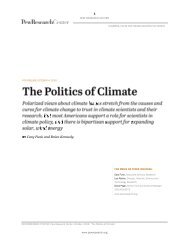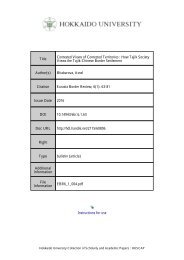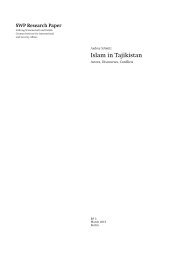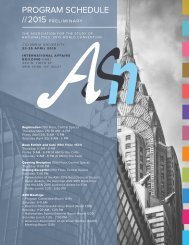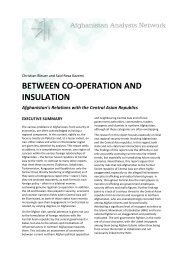Afghanistan in 2015 1
mM5Zmj
mM5Zmj
You also want an ePaper? Increase the reach of your titles
YUMPU automatically turns print PDFs into web optimized ePapers that Google loves.
12<br />
<strong>Afghanistan</strong> <strong>in</strong> <strong>2015</strong><br />
• Television ownership and viewership. The percent of respondents who own a television has<br />
<strong>in</strong>creased from 36.9% <strong>in</strong> 2007 to 62.1% <strong>in</strong> <strong>2015</strong>. When asked which television shows they<br />
watch the most, Afghans cite the six o’clock news (33.8%), followed by serials (25.8%), religious<br />
programs (4.0%), and sports (3.1%).<br />
• Internet access. Approximately one-fifth (21.0%) of respondents nationwide report hav<strong>in</strong>g<br />
someone <strong>in</strong> their household who has access to the <strong>in</strong>ternet. Internet use cont<strong>in</strong>ues to grow. In<br />
2013, 3.2% said they use the <strong>in</strong>ternet for news and <strong>in</strong>formation. This year, 9.6% say the same.<br />
Women and society<br />
• Assistance for women. Nearly one quarter (23.4%) of respondents know of an organization<br />
that assists women with their problems, an <strong>in</strong>crease over previous years. More urban respondents<br />
(28.1%) than rural (21.9%) are aware of places where women can seek assistance. Almost half of<br />
respondents (45.7%) identify the Directorate of Women’s Affairs, while 9.7% identify the District<br />
Governor’s Office and 9.0 % identify the Human Rights Council/Office.<br />
• Access to justice. Overall, 47.0% of Afghans who have taken a case to the state courts agree that<br />
the state courts treat men and women equally. Notably more women (51.1%) than men (43.1%)<br />
say that there is equal treatment of men and women by the state courts. Among respondents who<br />
took a case forward for resolution by a jirga or shura, 67.2% agree there should be local women’s<br />
jirgas and shuras.<br />
• Customs and cultural practices: Most Afghans (80.5%) disagree with the practice of baad, where<br />
a daughter is given to another party as a penalty or payment for some offense. Fewer, but still a<br />
majority (64.7%), disagree with the practice of baddal, the exchange of daughters between families<br />
for marriage. In both cases, the human rights concern is that the daughters may be forced to marry<br />
without their consent. Meanwhile, 87.8% of respondents agree that a daughter is entitled to part<br />
of her deceased father’s <strong>in</strong>heritance (miras), a right guaranteed by Islamic law.<br />
• Women’s attire <strong>in</strong> public. Over a third (35.1%) of Afghans say that the burqa (a full-body cover<strong>in</strong>g)<br />
is the most appropriate public dress for women, followed by 27.7% who say the niqab (a veil that<br />
covers the full face, with the exception of the eyes). Only 1.2% of Afghans say it is appropriate for<br />
a woman to be unveiled <strong>in</strong> public.<br />
• Leadership. Among an array of leadership positions, Afghans are most likely to agree that a<br />
woman should be allowed to sit on a community development council (74.4%) and least likely<br />
to agree that a woman can run for president (52.9%). A majority of Afghans agree that women<br />
should be eligible to serve as a government m<strong>in</strong>ister or cab<strong>in</strong>et member (58.5%), as a governor of a<br />
prov<strong>in</strong>ce (57.6%), or chief executive officer of a large company (56.3%). However, support for the<br />
idea of equal representation of men and women <strong>in</strong> political leadership positions has been steadily<br />
decl<strong>in</strong><strong>in</strong>g, from 51.1% <strong>in</strong> 2008 to 43.6% <strong>in</strong> <strong>2015</strong>.



